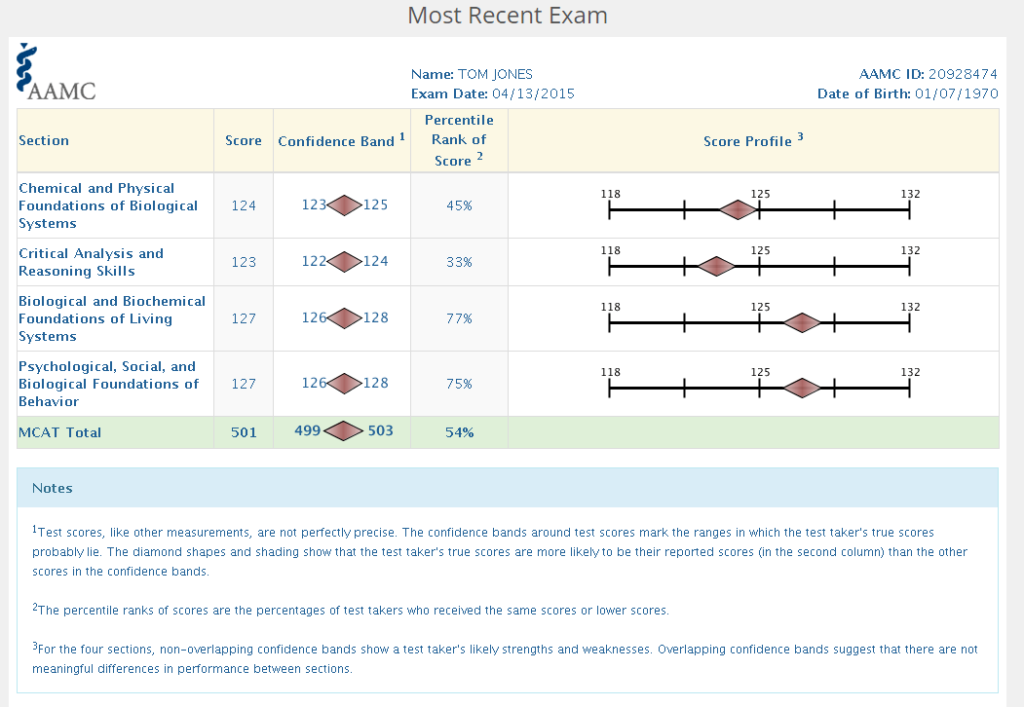You’ve studied hard, taken the MCAT, and now you’ve received an exciting email saying that your score report is ready. You excitedly open the email, click the link to log in, and see your score report for the first time. It has your name on it and some funny bars graphs alongside the numbers. This post will go over what the score report means and how to read an MCAT score report.

How to Read an MCAT Score Report
Above is an example from the AAMC of what a real MCAT score report looks like. The AAMC also provides an explanation for how to understand your score report and the rationale that goes into each component. It will have your name, AAMC number, test date, and date of birth. For now, we’ll address just what each part means.
Section and Score
This is the “bottom line” for your score. The score report lists out each section and the individual score you received for each section. These individual scores are totaled for an “MCAT Total Score.” This is your “score” for the MCAT.
Confidence Band
The confidence band shows the range of your score accuracy. Because it is a standardized test, there are many factors that can influence your exact score. They are an acknowledgement of the inherent inaccuracies that lie in standardized exams and are meant to discourage distinction between people with similar scores. For example, in the sample score report above, the total score has a confidence band of 499 to 503. The person scored a 501, but the confidence band is meant to suggest that people who scored between a 499 and 503 did about as well as Tom Jones.
Percentile Rank of Score
This column lists the percentile of your score for each section and your total percentile. Percentiles tell you how you did with regard to the rest of the people taking the MCAT. If you scored in the 75th percentile, this means you did better than roughly 75% of all other test-takers. The AAMC updates these percentiles yearly. Here you can read more about MCAT percentiles.
Score Profile
This graph is simply a visualization of your score and percentile. The scores correspond to percentiles, so you can see how well you did by how far right the diamond is. The further right the diamond is, the higher your score and the higher your percentile.







